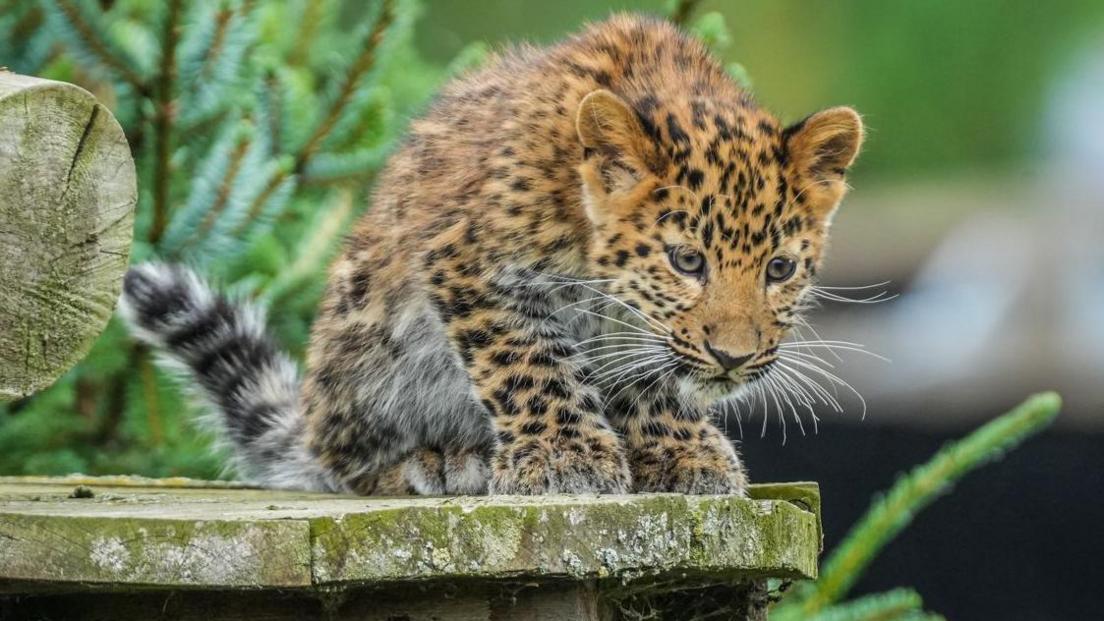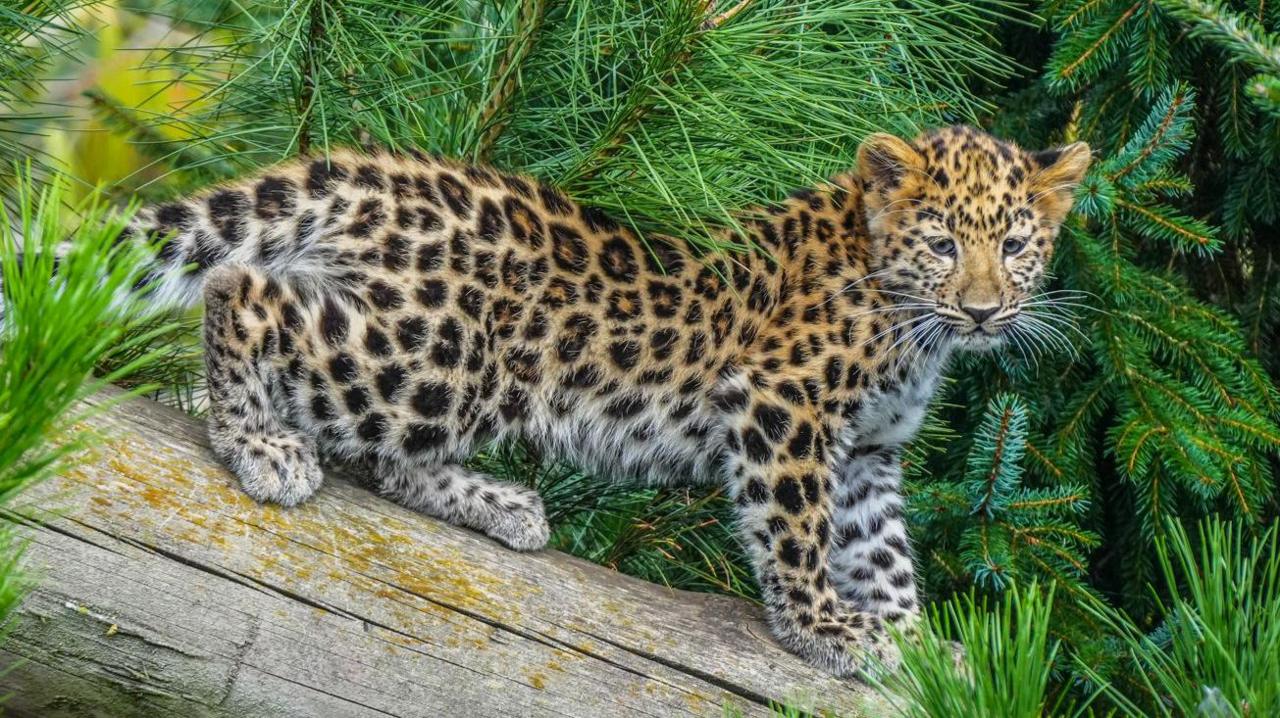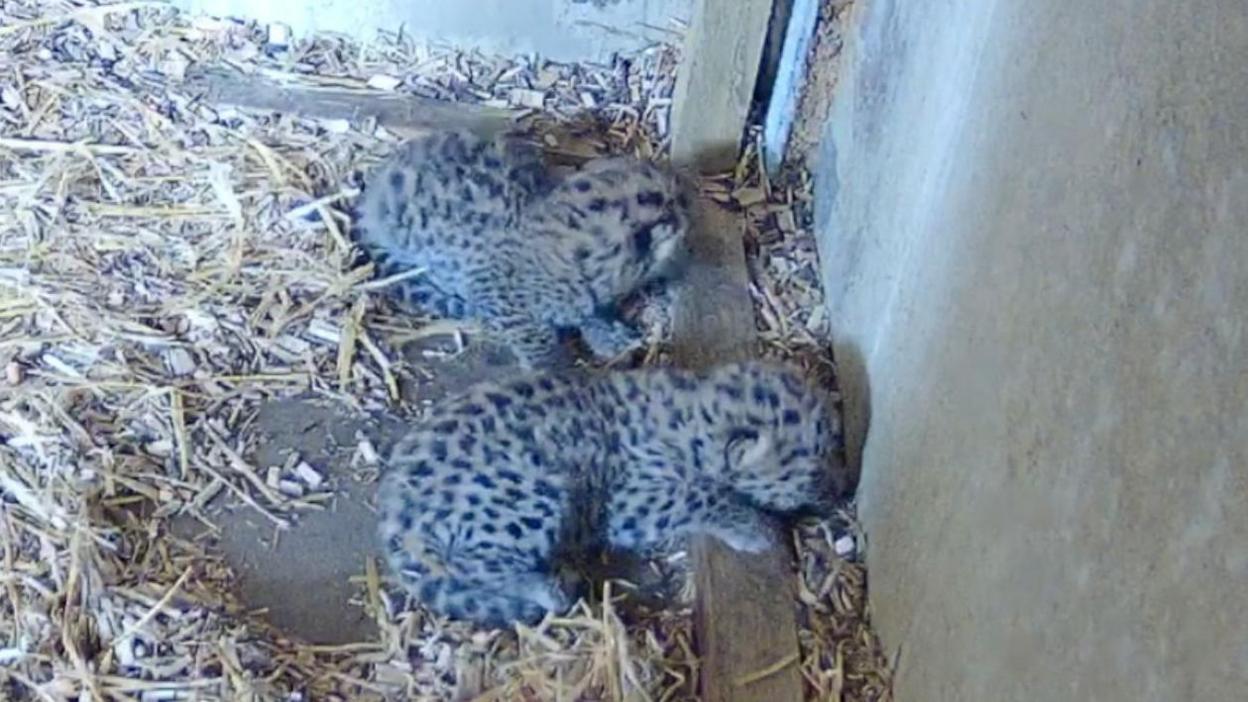Critically endangered cubs make public debut

The two Amur leopard cubs were born in May
- Published
Two critically endangered leopard cubs have made their public debut at Yorkshire Wildlife Park.
In May, they were the second and third Amur leopard cubs to be born in the world this year, with only about 100 of the subspecies left in the wild, according to the WWF wildlife charity.
The cubs have been released into the main reserve at the wildlife park, near Doncaster, in full view of the visiting public.
Kate Borrington, senior carnivore ranger, said: "The female cub is very confident and sassy like her mother, Kristen. The male cub is a little more reserved, but both have settled in nicely."
The cubs have been allowed outside now they have passed two months of age and had their vaccinations.

Both cubs have already climbed to the highest point in their enclosure
Ms Borrington said they had enjoyed exploring the new area, and both had already climbed up to the highest points of the reserve.
"Kirsten definitely has her work cut out with these two new playful cubs, but she is doing an excellent job," she said.
"It is fascinating to watch them develop and we know that they will be a firm favourite amongst visitors."
In the wild, Amur leopards are found around the border between the Russian Far East and north-east China, and possibly in North Korea, according to the WWF, external.

Amur leopards are thought to be the most endangered big cat in the world
The population reached its low point last century, with only about 30 individuals estimated to remain, external in the wild, and amur leopards are now the most critically endangered big cat species.
Their numbers have been affected by illegal hunting and trading, and damage to their forest habitats from climate change and global demand for wood and paper.
But, in the last two decades, conservation efforts have seen the subspecies' territory increase threefold to about 2,350 square miles.
The Wildlife Foundation charity, which is based at Yorkshire Wildlife Park, supports the conservation of leopards.
This has included working with the WildCats Conservation Alliance to promote breeding, population monitoring and habitat protection.
Get in touch
Tell us which stories we should cover in Yorkshire
Listen to highlights from South Yorkshire on BBC Sounds, catch up with the latest episode of Look North
Related topics
- Published1 May

- Published4 May
